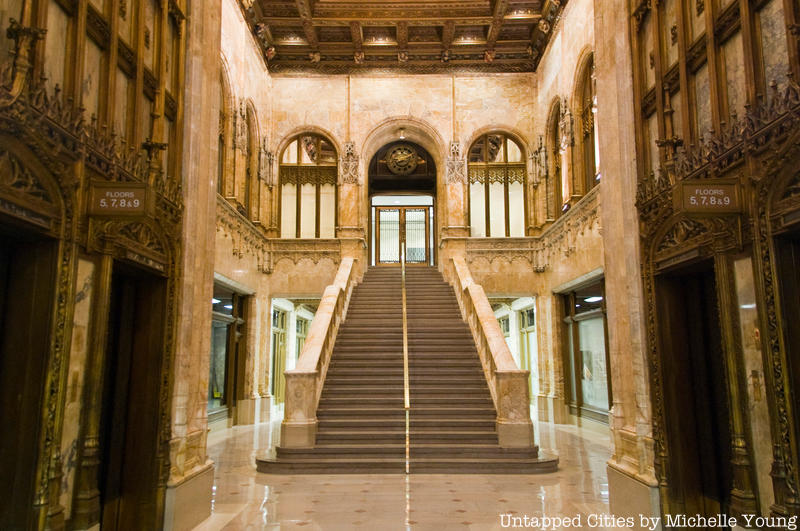
When the Woolworth Building was constructed in 1910, owner Frank Woolworth and architect Cass Gilbert wanted to make the structure fireproof. With the recent tragedy of Triangle Shirtwaist Fire and the memory of the Great Fire of New York City in 1835 in mind, every precaution was taken to ensure that the “Cathedral of Commerce” would not succumb to a similar fate.
Fires are always destructive, and in cities where buildings are close together and fire can spread quickly, they can be devastating. From carefully chosen construction materials to innovative new technologies, here are five places you can spot the fireproofing methods used in the Woolworth Building.
5. Terra Cotta in the Walls of the Woolworth Building
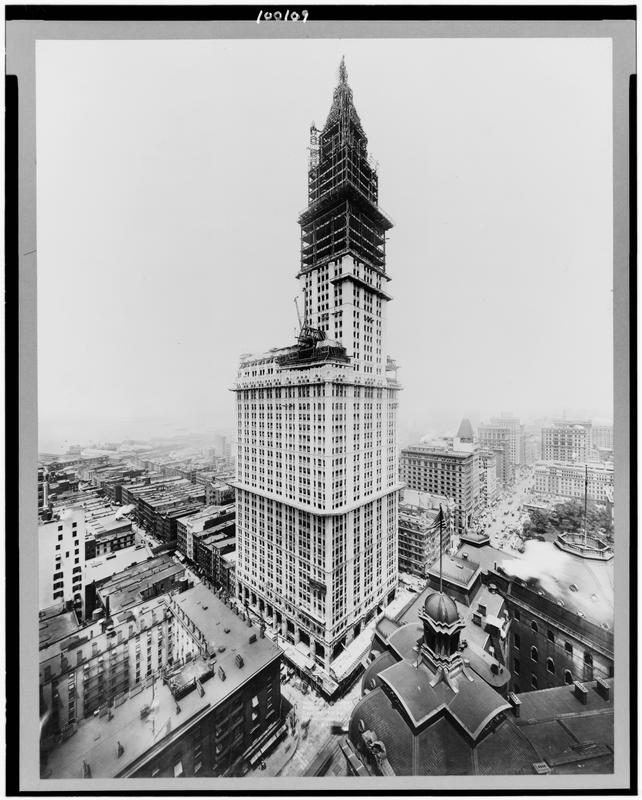 Image via Wikimedia Commons, Library of Congress
Image via Wikimedia Commons, Library of Congress
The Woolworth Building is one of the first skyscrapers to be constructed with steel. For further fire protection, the steel beams that make up the building’s skeleton are wrapped in terra cotta, a clay that does not burn. Terra cotta was also used by Gilbert in his design of the nearby building at 90 West Street. 90 West was severely damaged and caught fire in the terrorist attacks of 9/11, but due to the terra cotta, the spread of the fires was contained and though chunks were missing and the inside had to be gutted, the building was structurally sound.
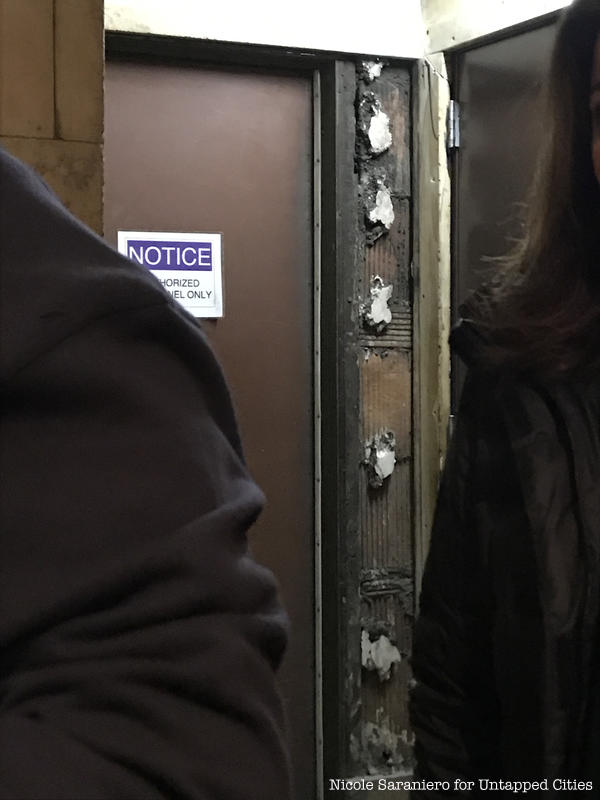 Exposed terra cotta in the basement of the Woolworth Building
Exposed terra cotta in the basement of the Woolworth Building
The lower levels of the Woolworth Building’s exterior also contain limestone, which is another type of stone that does not burn. No flammable materials were used in the construction, which helped give the Woolworth a sort of automatic fireproofing. On a tour of the Woolworth Building, you can see an exposed portion of the wall where the terra cotta is visible.
4. Plaster Coffered Ceilings
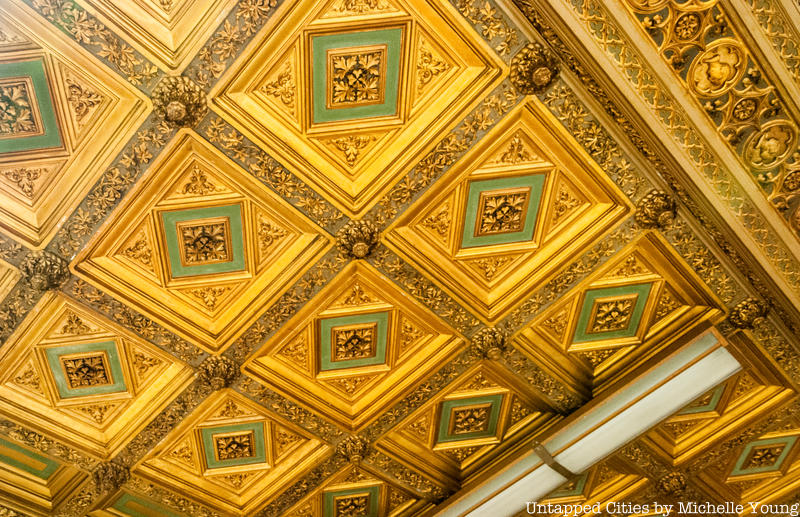
Hardly any wood was used at all in the construction of the Woolworth Building, not even for the coffered ceilings. The ornate ceilings that look like painted wood (and are traditionally made with the material) is actually made of plaster. Like terra cotta and limestone, which were used for the exterior of the building, plaster does not burn.
3. Safety Elevators
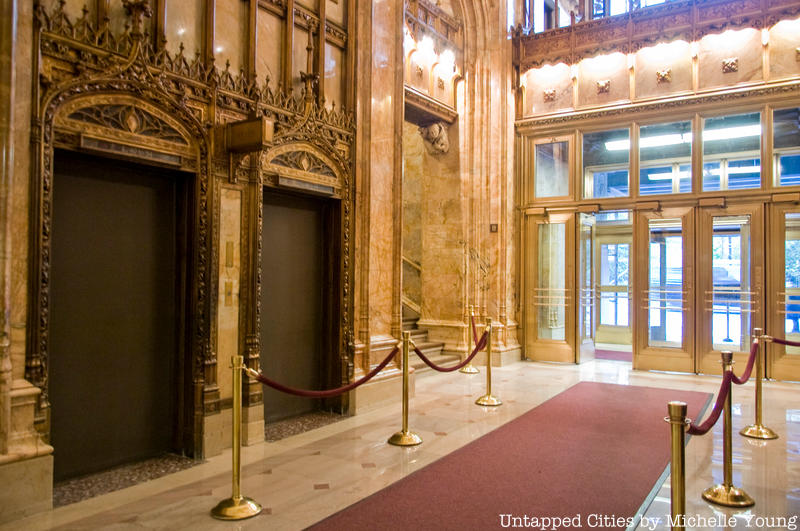
The Woolworth Building’s innovation in construction extended to all aspects of the building, including its elevators. The 57-story building was the tallest building in the world at the time of its opening in 1913 (later dwarfed by the Chrysler and Empire State Buildings), and the second tallest structure in the world just behind the Eiffel Tower. When the Woolworth opened, it had the fastest elevators in the world, but, they didn’t all go all the way up.
On a recent phone call with Helen Post Curry, the great-granddaughter of architect Cass Gilbert, she told us that very few of the elevators go all the way to the top of the building. The Woolworth Building has elevator banks that only go to certain floors. The elevator shaft is also tapered so that, in the event of a free fall, air cushions will prevent the elevator car from gathering too much speed and plummeting to its doom. Apparently, when the Woolworth was built in 1913, they tested the system by allowing each elevator car to fall. The safety features of the Woolworth’s elevators are explained in great detail in a brochure for the building published in 1921.
2. Fire Hoses on the Roof
 The abandoned pool, before renovation for the Woolworth Residences
The abandoned pool, before renovation for the Woolworth Residences
The Woolworth Building was self-sustaining in many ways including having its own electrical power, heating and cooling, water supply, and fire protection systems. The now abandoned pool in the basement of the building contained a drain to allow the water to be used by the building’s fire prevention system and there were fire hoses on the roof. The machinery that allowed for the flow of all this water was located in the subterranean pump room of the building. The Woolworth Building’s pump is capable of delivering 500 gallons of water per minute at the fifty-eighth story.
1. Salamander Symbols in the Lobby
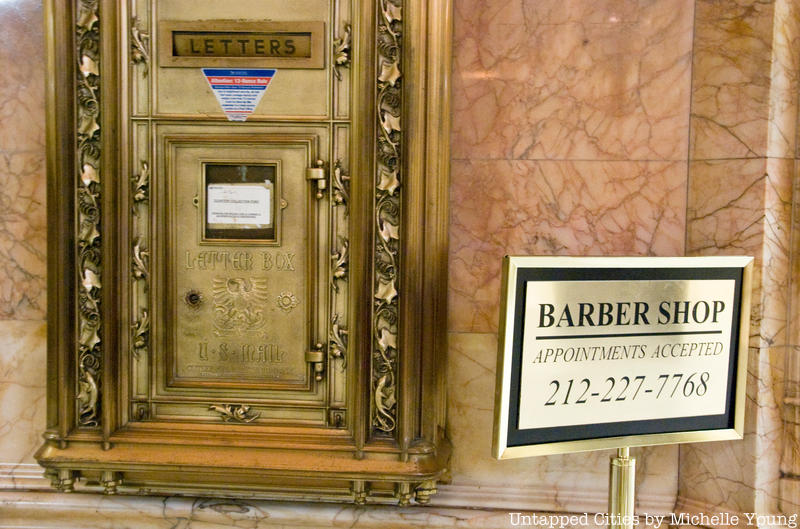
In the Woolworth Building lobby, if you look closely at the decorative detail of the gilded mailbox, you will find carvings of salamanders slithering through the vines up the sides. In folklore, these lizard-like amphibians are believed to be fireproof and can even put out fires with their cold bodies and saliva. These real life creatures with mythical powers were woven into the design of the Woolworth’s ornate lobby reliefs to symbolize the building’s fireproof construction.
Next, check out Daily What?! The Safety Deposit Graveyard and Bank Vault in The Woolworth Building





